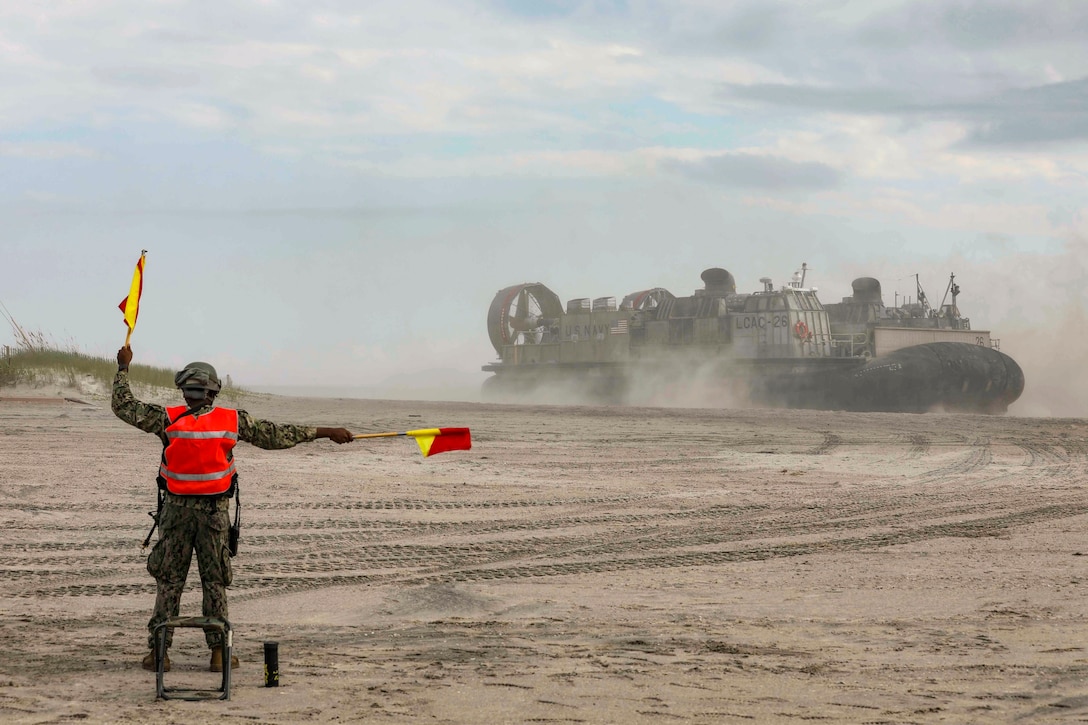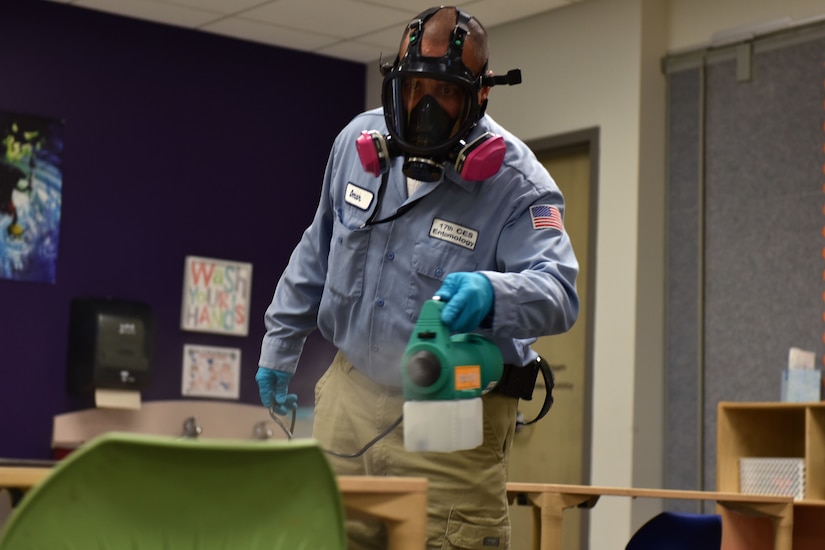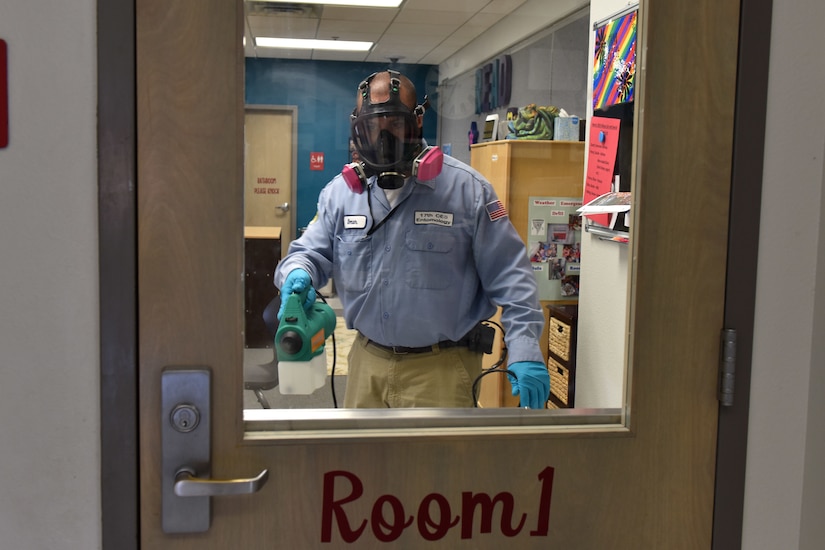Oct. 15, 2020
As Delivered by
Secretary of Defense
Dr. Mark T. Esper
Good afternoon everyone and thank you, Kay, for that
very kind and generous introduction. And I want to say a big thank you
to the Heritage Foundation for hosting this discussion about the
successes of the Department of Defense and the challenges we face, when
it comes to implementing the National Defense Strategy in this era of
great power competition.
Today, our strategic competitors, China and Russia, are attempting to
erode our hard-earned gains as they undermine international rules and
norms and use coercion against other nations for their own benefit. We
continue to see this behavior globally, from Beijing’s predatory
economics and its aggression in the South and East China Seas, to
Moscow’s violations of its international obligations and the sovereignty
of its neighbors.
When I was confirmed as Secretary of Defense in 2019, I made my top
priority the irreversible implementation of the National Defense
Strategy. This strategy guides our work to protect our comparative and
competitive advantages and defend a free and open global order along
three lines of effort: first, improving the lethality and readiness of
the force; second, strengthening allies and building partners; and
third, reforming the department for greater efficiency and
accountability. I also added a fourth, personal priority: taking care of
our service members and their families.
We have made great progress on all these fronts, which we distilled
into ten targeted goals to drive change across the entire Defense
Department enterprise – from focusing the department on China, to
developing coordinated guidance to strengthen allies and build partners;
from modernizing the force by investing in game-changing technologies,
to reforming the Fourth Estate; and, from reallocating, reassigning, and
redeploying forces in accordance with the NDS, to developing a new
joint warfighting concept, just to name a few.
In recent weeks, I have discussed our progress in several of these
areas, including modernization, and our plan for our future naval fleet
of over 500 ships. Today, I’d like to highlight our efforts on another
top ten goal: achieving higher levels of sustainable readiness.
First, it is important to define what readiness really means for the
United States Armed Forces. Simply put, readiness refers to our
military’s ability to answer the nation’s call, and to fight and win,
anytime, anywhere. It is comprised of the training and equipment we
provide our soldiers, sailors, airmen, Marines, and space professionals,
as well as the deployment and maintenance schedules that drive our
operations, and the way we keep our service members physically strong
and mentally tough.
The bottom line is that each part of the readiness life cycle is
vital to preparing and enabling our men and women in uniform to
successfully execute their mission. The question we must answer is this:
if called upon to fight tonight, are we ready?
Today, given our efforts over the past few years, I am fully confident the answer to that question is a resounding yes!
I will explain why in a few minutes, because first I want to show
through historical example how we learned the hard way the costs of not
being ready.
In July 1950, at the beginning of the Korean War, an understrength
infantry battalion and an artillery battery of close to 500 American
soldiers rapidly deployed to the outbreak of that conflict to a position
north of Osan, South Korea, to delay the invading North Korean forces.
These men, known as Task Force Smith, arrived without the standard kit
of a regimental combat team, including tanks and air defenses. Moreover,
they had very little ammunition, their training was inadequate, few of
them had any combat experience, and their anti-tank weapons were
ineffective.
Yet, they would soon encounter thousands of enemy forces and dozens
of North Korean tanks. Outgunned by the heavy armor and outmaneuvered by
enemy infantry, Task Force Smith was forced to retreat, suffering heavy
casualties in the process. The Battle of Osan demonstrated the tragic
consequences of leadership’s failure to understand the mission and their
responsibilities, leaving American troops unprepared, with obsolete
equipment, and heavily outmanned.
For many years, to include my time on active duty as an Infantry
Officer in the 1980s, the training imperative of the Army was “No more
Task Force Smiths.” That must remain our mantra today.
Our security environment looks much different 70 years later, but the
lessons we learned about the importance of readiness remain with us.
Today, the NDS requires the U.S. military to focus on preparing for a
high-end fight against near-peer adversaries. To do so, we must
acknowledge that for the past two decades, our attention was directed
mainly toward fighting low-intensity conflicts against insurgents and
violent extremist organizations. Moreover, years of insufficient budgets
and sequestration caused significant damage to our readiness – until
2017, when we were able to begin reversing course by adding over $200
billion to our budgets through fiscal year 2019.
Over the past few years, the department has refocused and restored
readiness in accordance with the NDS, along three major categories –
people, policy, and performance – each of which I want to address in
greater detail.
In the policy category, the department has made our biggest changes
in Global Force Management since the early 2000s, with the aim of
creating more ready forces with far greater readiness and operational
unpredictability. The NDS recognizes the need to balance the
department’s modernization for future, high-end conflicts with the
demands of current operations.
To do so, we must grow our available pool of ready forces. Next, we
must deploy them with greater agility in response to crises and
strategic opportunities. And finally, we must be more disciplined in how
we manage this ready supply from the Services with the requests from
Combatant Commanders. In addressing this challenge, the department has
undertaken two major policy shifts.
First, implementing Dynamic Force Employment allows us to rapidly
reposition forces to enhance deterrence, to introduce operational
uncertainty into our adversaries’ calculus, to take advantage of global
opportunities and emerging situations, and to test our own readiness.
Second, increasing the number of highly-ready Immediate Response
Forces and follow-on Contingency Response Force units, the IRF and the
CRF, and providing greater central authority to use them globally,
allows us to tailor the readiness of the Joint Force for the most
stressing war plans.
Combined, these policy shifts – which constitute another one of our
top ten NDS objectives – have enabled us to think and act globally, with
speed, unencumbered by limitations within individual, geographic
Combatant Commands. This construct has also allowed us to be much more
confident in the joint force’s preparedness, and in directing readiness
levels from the Services, while also creating predictability and
efficiency within our programming and budgeting system.
A particularly salient example is the Bomber Task Force operational
concept. In April of this year, I approved an Air Force construct to
improve the readiness and strategic flexibility of our bomber force,
moving away from a 16-year static and predictable presence on Guam that
was burning down readiness. This change was also necessary to complicate
Beijing’s decision-making and prevent them from targeting our assets or
limiting our range with their growing capabilities.
The impact of the Bomber Task Force concept extends beyond the
Indo-Pacific, however, offering a range of options to Combatant
Commanders in multiple theaters, including Europe. In August, six B-52
bombers from Minot Air Force Base, supported by a robust airborne tanker
brigade, overflew all 30 NATO countries in a single day, integrating
with allied fighter aircraft along the way. This robust show of force by
a broad coalition did not go unnoticed by Moscow. Neither did our
ability to rapidly deploy our bombers anywhere, at any time, sending a
strong message of our commitment to our allies and partners.
Moreover, the Air Force continues to maintain a heightened posture of
readiness to deploy fighter squadrons on short notice, much like we did
late last year to support Saudi Arabia, following Iran’s attacks on its
soil.
Another example is the aftermath of U.S. airstrikes against
Iran-backed militia sites in Iraq last year. On December 31st, Pentagon
senior leaders were informed of a large, violent protest outside the
U.S. Embassy in Baghdad, followed hours later by notice of a possible
embassy breach. This triggered the requirement to deploy an Immediate
Response Force, which was successfully accomplished within 19 hours of
the incident. Over the next three days, an entire Infantry Brigade
Combat Team consisting of more than 3,000 soldiers and equipment was
deployed halfway around the world to secure American lives and property
in Iraq.
The Navy has also executed multiple short-notice movements under
dynamic force employment. This includes the deployment of the USS Dwight
D. Eisenhower earlier this year, which was quickly adjusted in light of
the coronavirus outbreak and forced the Ike to remain at sea for seven
months to continue its maritime stability and security operations in the
Middle East. It also includes the rapid deployment of the Comfort and
Mercy hospital ships to the east and west coasts of the United States in
March, to provide medical support in COVID hospitals to support the
American people.
Moving on to people, the department has pursued several initiatives
to train our personnel for great power competition, to better prepare
them to deploy if called upon, and ensure they are less likely to serve
in back-to-back deployments – all while improving their quality of life.
Our path forward also relies on Service-level training and
professional military education that develops the expertise of our force
on Chinese military systems, tactics, and doctrine – much like my
generation did when we studied the Soviet armed forces during the Cold
War. As part of our top 10 goal to focus the department on China, I
directed the National Defense University to refocus its curriculum by
dedicating 50 percent of the coursework to China by academic year 2021. I
also tasked the military Services to make the People’s Liberation Army
the pacing threat in our professional schools, programs, and training.
Another critical factor in our readiness is the size and composition
of our deployable force, which we now track in ways we never did before.
We have added nearly 30,000 military personnel to our ranks since 2016,
and made great gains not simply by growing our end strength, but by
maximizing the number of service members we are able to deploy at any
given time. This was the result of close, senior level and senior leader
attention to needed reforms such as quickly resolving medical
conditions, enabling service members to get back to a ready status
sooner.
Ultimately, we drove down non-deployable numbers past our goal of
five percent of the force, increasing readiness by returning tens of
thousands of personnel to fully deployable status months ahead of
schedule. For example, over the last few years, the Army’s
non-deployable population has decreased well over 50 percent, meaning
many more soldiers are available for a potential, high-end fight, if
called upon to go.
Since 2017, the Air Force has recruited and trained 4,600 additional
maintenance personnel, which, coupled with additional investments, drove
a 19-percent increase in overall unit readiness. At the same time, the
number of sailors filling operational sea-duty billets is at its highest
point since 2014.
Meanwhile, we are doing everything in our power to balance the
inexorable demands of overseas deployments with readiness and our
service members’ commitments at home. One of our first tasks – before we
make a decision to send forces abroad – is to determine how the
deployment will impact their work/life timelines. By increasing and
monitoring these deploy-to-dwell thresholds, we are working to make sure
every warfighter and unit gets adequate time to recover from their last
deployment, is well trained and prepared for their next one, and on a
more personal note, experiences more of the important moments in their
families’ lives. We aim to do all this while enabling the Services to
continue to generate enough readiness for both today and tomorrow.
Key to our people’s ability to execute their mission is their
resiliency and wellbeing. This is why we continue to take steps to
improve service members’ quality of life, including by expanding the
availability of childcare, helping spouses sustain their careers through
multiple PCS moves, improving housing, and providing mental health
resources and other support. It is also why we remain focused on
reinforcing ethical leadership across the force, fostering trust in the
chain of command, and promoting inclusion and equal opportunity for
all.
Finally, regarding performance, the department is working alongside
industry partners to improve maintenance and sustainment, while
investing in high-end training and exercises to increase the proficiency
of the force.
Many of our aircraft have undergone extensive maintenance and
much-needed upgrades over the past few years to substantially increase
their readiness levels. This includes the F/A-18 Hornet, whose mission
capable rate increased from a long-term average of 55 percent, to 80
percent, as of last year. Among several initiatives, the Navy divested
from the oldest, legacy Hornets, and harvested more than 14,000
repairable items for spares.
Additionally, improvements were made to manage the aircraft
undergoing depot repair and increase workforce employment. As a result,
we now have more ready aircraft on the flight lines, and pilots with
greater proficiency and experience.
The department’s fiscal year 2021 budget request aimed to strengthen
warfighting readiness with a balanced mix of fighter aircraft –
including F-35s – to ensure American air dominance. As we transition to
new platforms, we continue to restore and maintain legacy ones, such as
the CH-53E Super Stallion heavy lift transport helicopter. The Marine
Corps has improved this helicopter’s mission capable rate by nearly 10
percent since fiscal year 2017 in fleet squadrons, and returned 38
helicopters to full mission capable status – supporting the execution of
over 104,000 flight hours in training and operational flights.
Overall, the Navy’s readiness has been on an upward trend since 2018,
thanks to increases in readiness funding, and process improvements in
aviation and private shipyards, including the hiring of hundreds of
additional shipyard personnel. As a result, on-time ship maintenance
completion rates have increased considerably, which I was pleased to see
during my visits to shipyards in Norfolk, Virginia, and Groton,
Connecticut. Further, the Navy is investing $20 billion over the next 20
years to modernize our aging public shipyards, recognizing the impact
that these improvements will have on our goal for Battle Force 2045 –
the modern 500-plus ship Navy I outlined last week.
The Air Force and Space Force have also made significant progress in
rebuilding readiness across multiple aircraft fleets, satellite
constellations, and mission sets, while actively pursuing the
development of integrated systems such as the Advanced Battle Management
System. Key in this effort has been our investment in Weapon System
Sustainment, with a nine percent funding increase yielding tangible
improvements in aircraft availability and training opportunities. And,
as the priority for manning, “first to fight” front-line units have seen
increased readiness as high as 45 percent over the past two years.
Meanwhile, we have enhanced our ground combat capabilities by
converting Infantry Brigade Combat Teams to Armored Brigade Combat
Teams, the Army’s most lethal and mobile combat formations. Over the
past four years, the Army has increased the number of ABCTs ready for
deployment by 30 percent, while also upgrading and modernizing more than
470 Abrams tanks. Additionally, this year the Army conducted its
largest strategic force projection exercise in nearly two decades, with
Defender 20, integrating Armored Brigade Combat Teams with our NATO
partners in both maneuver and live-fire exercises on the European
continent.
Among our efforts to further enhance the proficiency of our force, the
Defense Department has streamlined pre-deployment training,
preparations, and medical requirements, by returning those decisions to
the military departments. This April, I also signed the Joint
Operational Training Infrastructure Strategy to integrate our efforts to
modernize operational training over the next ten years. This is a vital
step toward fulfilling another one of our top 10 goals: that is,
establishing realistic joint war games, exercises, and training plans.
In doing so, we will ensure the Joint Force receives better training
that replicates operational conditions in contested environments against
our strategic competitors.
The Air Force, for example, has migrated to a common simulator
platform to enhance interoperability and cybersecurity, and to integrate
multiple domains. This step was taken in response to the insufficient
capabilities of simulators that were designed as stand-alone devices,
training crews to fly specific aircraft.
Meanwhile, the Navy is developing an integrated Live, Virtual,
Constructive training environment, which merges live and synthetic
training to prepare our forces for conflict against peer and near-peer
competitors. At the same time, the Navy and Marine Corps are preparing
for Large Scale Exercise 2021, a multi-domain maritime exercise that
will test their ability to integrate and operationalize fleet design and
supporting concepts at multiple levels of war.
As we continue to strengthen the United States military readiness for
the future, our imperative is to build upon the gains we have made in
recent years, while adapting to stay ahead of emerging challenges –
including cyber.
We know adversaries and malign actors are attempting to attack and
jeopardize the networks that our platforms, weapons, and formations rely
upon to operate. The tremendous investments we have made in our most
lethal capabilities could be rendered ineffective in a high-end fight,
unless we treat cyber capability readiness with the same seriousness as
we do materiel or personnel readiness. This is why the department has
put cyber on par with the other elements of readiness I discussed
earlier: people, equipment, and training.
The coronavirus pandemic represents another challenge to our military
and our industrial base. However, the department has been quick to
minimize its impact on our forces, by taking immediate action, going
back to January, to stem the spread of the virus in our ranks. We
suspended international travel for our personnel, then shifted to a
conditions-based approach. We published thirteen iterations of Force
Health Protection guidelines since early February, when we activated our
global pandemic response plan. And, we modified our training to
mitigate COVID risks – this year’s RIMPAC exercise, for example, was
held only at sea, without port calls.
At the same time, we provided medical support, personal protective
equipment, and other supplies to federal agencies working in hotspots
around the country in support of the American people. And, through the
Defense Production Act, we announced over $500 million worth of
contracts to sustain essential domestic industrial base capabilities.
Meanwhile, more than 140 DoD labs have performed over 1.2 million
COVID clinical diagnostic tests so far, as part of our work to enable
the safe deployment of forces across the globe. And we are testing an
average of 40,000-plus service members weekly; that number reached more
than 54,000 earlier this year, due to our robust monitoring efforts.
We also developed a convalescent plasma collection strategy to
support advanced illness within the force, and collected nearly 11,000
units by the end of the fiscal year. While our competitors attempt to
exploit the pandemic and extend their malign influence, the United
States military continues to protect our people, remaining prepared to
deter every threat, and to fight and win, if need be.
Lastly, the success of our efforts relies on the support of Congress.
In the face of rising strategic threats, we depend on steady fiscal
commitments to sustain our current force, and prepare for tomorrow’s
challenges. The past few years of funding allowed us to rebuild our
readiness after years of insufficient budgets, yielding significant
results; 52 percent of our major combat force elements are able to
generate more combat power during the initial phases of a conflict today
than they could in 2017.
Now, as I’ve said many times before, we need predictable, adequate,
stable, and timely federal budgets to continue to support the
investments of our industrial base, to grow our capabilities, and to
further strengthen readiness. I would like to see 3-5% annual real
growth for the Defense Department to stay ahead of the challenges we
face, especially from China, and no more CRs!
Looking ahead, I am confident that the department’s civilian and
military leaders are aligned to deliver more sustainable readiness,
particularly as I meet regularly with them to assess our progress toward
that goal. Much of this involves bringing together hundreds of data
systems into a common, advanced analytics architecture that provides
real-time data and predictive indicators. This tool allows senior
leaders to evaluate readiness at every level, better manage our forces
in response to emerging threats, and to make decisions to best address
readiness challenges.
The department’s vision for readiness is one in which our people are
focused on great power competition from day one, and trained to deter
and prevail in the high-end fight, while able to perform across the full
spectrum of combat operations. It is a vision in which we have more
planes in the air, more ships at sea, more units prepared to go into
combat at a moment’s notice, more cyber warriors online, and more space
assets ready to defend the high ground.
It is a vision in which our people have the resources they need, when
they need them, so that they never find themselves in a fair fight. We
must, and will, maintain our decisive overmatch well into the future.
And, it is a vision in which senior leaders have more flexibility to
move our forces and equipment around the globe, enabling us to project
power, to reassure our partners and allies, to deter aggression, and to
effectively respond to emerging crises.
Thanks to the hard work of our men and women in uniform, and with the
support of Congress, industry, and our like-minded partners, the United
States military will continue to honor that vision, and strengthen our
readiness, now and in the years to come.
Thank you.













